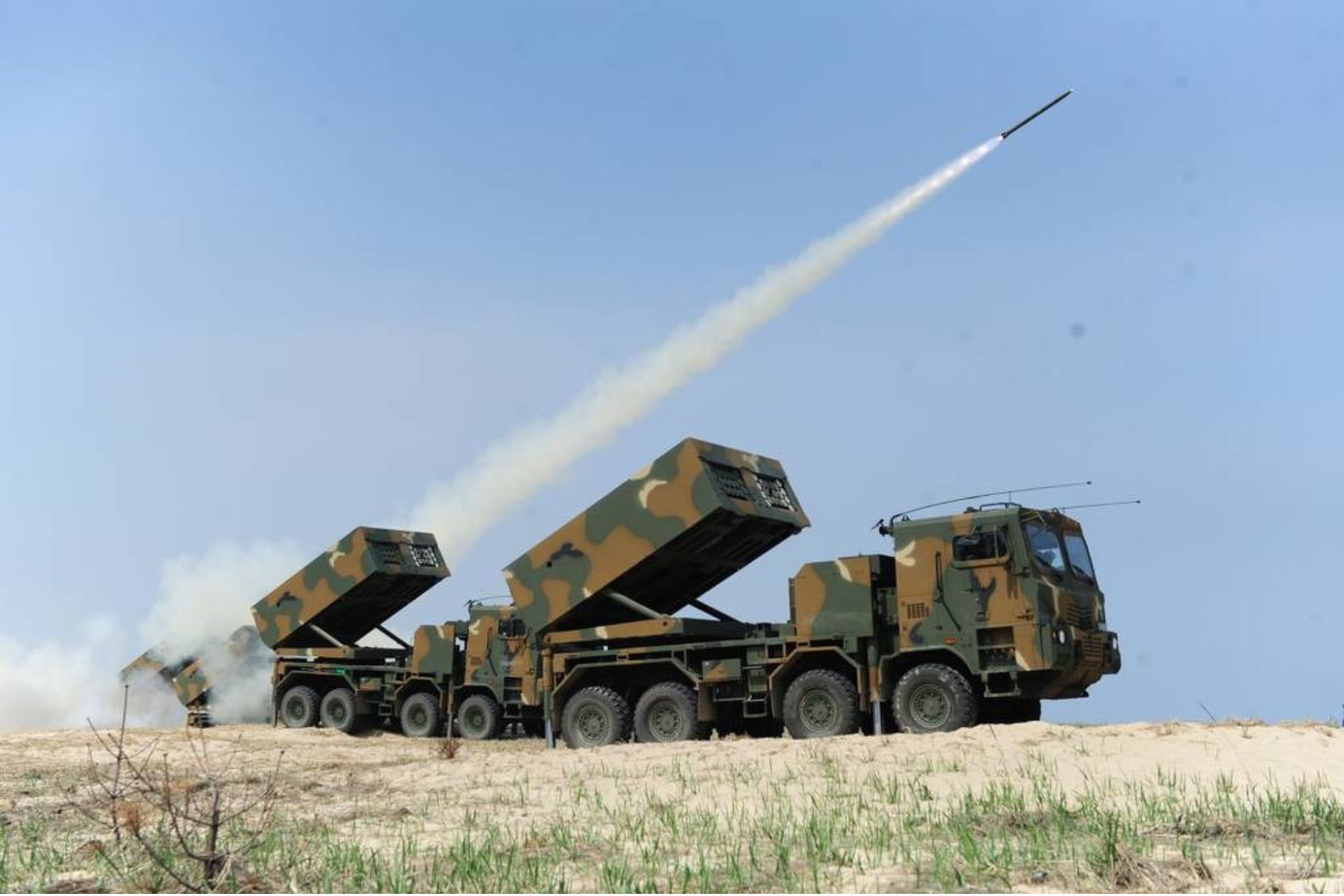Breaking News
South Korea Expands Missile Export Range to 500km for Middle Eastern Clients.
South Korea has decided to extend the range of its export missiles from 300 kilometers to 500 kilometers in response to requests from Middle Eastern countries, as reported by The Korean Economic Daily. This decision follows a recent National Security Council (NSC) meeting chaired by the Office of the President of South Korea. Military industry sources indicate that this extension is aimed at addressing concerns raised by several Middle Eastern countries regarding the limited range of South Korean multiple rocket launchers, including the K239 Chunmoo.
Follow Army Recognition on Google News at this link

South Korea’s decision to extend missile range follows the lifting of a 42-year-old restriction on its missile development program by the United States in 2021 (Picture source: Hanwha Defense)
The K239 Chunmoo, a South Korean multiple-launch rocket system (MLRS) developed by Hanwha Defense, began production in 2015 and was quickly deployed by the South Korean military. Designed to replace the older K136 Kooryong system, the Chunmoo is highly adaptable and capable of firing various rocket types, including 130mm, 227mm, and 239mm munitions, with ranges from 36 kilometers to 160 kilometers depending on the rocket type. The system is mounted on an 8x8 truck chassis, providing mobility and protection for the crew. It is currently in service in South Korea and has been exported to countries such as Poland and the United Arab Emirates.
Key features of the Chunmoo include its 360° rotating launch system, precision-guided munitions, and the ability to mix different types of rockets in a single mission. The system can also deploy the Korea Tactical Surface-to-Surface Missile (KTSSM), with a range of up to 200 kilometers and an accuracy of less than 2 meters. With a maximum speed of 90 km/h and an operational range of 800 kilometers, the Chunmoo is a powerful artillery system designed for long-range precision strikes and rapid deployment in various combat scenarios.
This decision is particularly significant for countries like the United Arab Emirates and Saudi Arabia, which have already invested in South Korea’s Chunmoo system. The UAE acquired the system in 2017, and Saudi Arabia has recently purchased and deployed it. Additionally, Hanwha Aerospace Co., a major South Korean defense company, signed a $1.64 billion contract in April to supply 72 units of the CTM-290 Chunmoo to Poland. This deal is part of a larger $22 billion agreement between South Korea and Poland, aimed at strengthening Poland’s military capabilities in response to the ongoing conflict between Russia and Ukraine.
South Korea’s decision to extend missile range follows the lifting of a 42-year-old restriction on its missile development program by the United States in 2021. Although this allows South Korea to develop ballistic missiles capable of reaching far beyond the Korean Peninsula, exports remain subject to the restrictions imposed by the Missile Technology Control Regime (MTCR). The MTCR, an informal political agreement among 35 member states, aims to prevent the proliferation of missile technology. South Korea became a member in 2001.
The Chunmoo system, as configured for Poland, has a maximum range of 290 kilometers due to MTCR restrictions. However, following the NSC decision, South Korea’s Defense Acquisition Program Administration (DAPA) is expected to approve modifications that would allow for increased missile range in exports. Experts believe South Korean defense companies will achieve this by reducing warhead weight, thereby extending range without violating international agreements.
This decision has raised concerns about potential conflicts with MTCR regulations, particularly regarding the export of weapons of mass destruction. However, officials argue that multiple rocket launchers, such as the Chunmoo system, fall under Category 2 of the MTCR, where the intent of the importing country is a key control criterion. As tensions rise in the Middle East, particularly with the ongoing Israel-Hamas conflict and the threat of broader regional conflict, extending the range of the Chunmoo system could allow it to strike deeper targets in Iran across the Persian Gulf.
This extension could also provoke a response from Russia, especially as South Korean weapons play an increasing role in Europe. Some analysts suggest that the United States may have supported the range extension, anticipating a greater role for South Korean arms in the European theater.


























